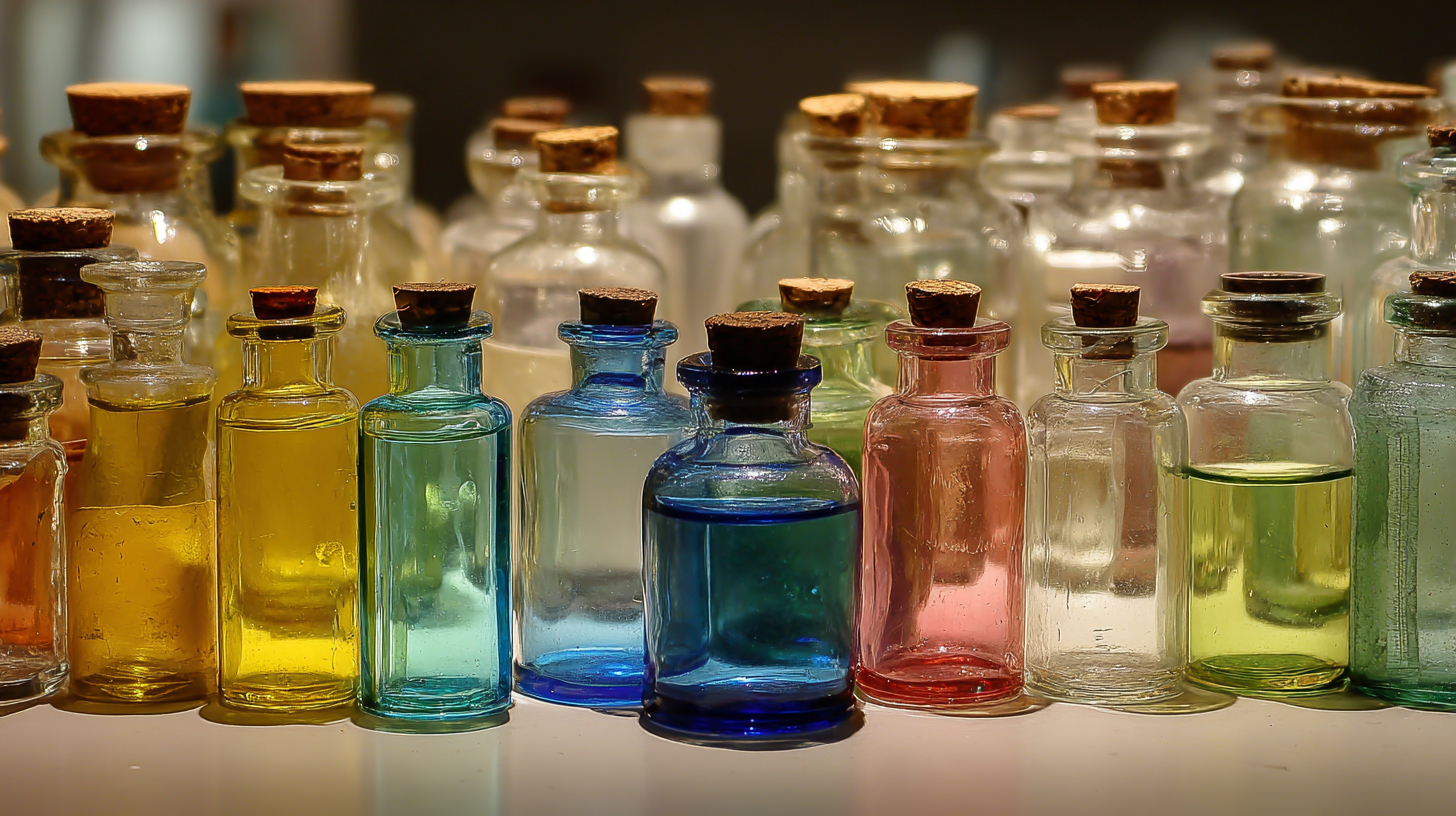

In the ever-evolving world of fragrance and flavor, aroma chemicals play a pivotal role in shaping our sensory experiences. According to a recent report by Market Research Future, the global aroma chemicals market is projected to reach approximately $8 billion by 2023, demonstrating a steady growth driven by increasing consumer demand for innovative scents in various applications, from perfumes to food and beverages. These synthetic and natural compounds are not only crucial for creating signature scents but also possess unique properties that can enhance product performance.

This guide delves into the distinctive characteristics of the best aroma chemicals, offering insights into their diverse applications and essential selection criteria, empowering industry professionals to make informed choices in their fragrance formulation processes.
Aroma chemicals, essential components in the creation of fragrances, can be categorized into several distinct types based on their origin, structure, and scent profile. Natural aroma chemicals are derived from botanical sources, while synthetic variants are created in laboratories to enhance fragrance stability and consistency. The global aroma chemicals market is projected to reach USD 30 billion by 2026, as highlighted in a recent market analysis report that underscores the growing demand for personalized and sustainable scents in various industries, from perfumery to food and beverages.
Understanding these categories not only aids in selecting the right aroma chemical for a specific application but also allows for the creation of more innovative products. For example, esters are often favored for their fruity scents and are widely used in flavorings, while terpenes provide refreshing and earthy notes and are essential in both cosmetics and cleaning products.
Tip: When selecting aroma chemicals, consider the end application to ensure compatibility. For instance, if you are developing a product for sensitive skin, opt for hypoallergenic or naturally derived aroma chemicals to reduce potential irritation.
Another crucial aspect to consider is the regulatory landscape governing aroma chemical use. Reports suggest that around 30% of fragrance ingredients are subjected to strict regulations; hence, staying informed about these changes will enhance your selection process.
Tip: Always consult safety data sheets and compliance guidelines, especially when working with synthetic aroma chemicals, to ensure adherence to industry standards and consumer safety.
Aroma chemicals play a pivotal role in various industries, particularly in food, fragrance, and cosmetics. In the food industry, these chemicals are essential for creating flavors that enhance the sensory experience of products. From natural extracts like vanillin to synthetic compounds that mimic fruity scents, aroma chemicals are meticulously selected to meet consumer preferences and regulatory standards. Their application goes beyond mere taste; they also influence the aroma profile, making food more appealing and enjoyable.
In the fragrance industry, aroma chemicals are the backbone of perfumes and colognes. They are carefully blended to produce complex scent profiles that cater to diverse consumer tastes. These chemicals can evoke emotions and memories, making them a powerful tool for brands aiming to create a lasting impression. For example, floral and citrus notes are often used to convey freshness and vitality, while warmer, earthier scents can evoke comfort and luxury.
The cosmetic industry also benefits significantly from aroma chemicals. They are incorporated into skincare and beauty products, not just for their scent but also for their ability to enhance the consumer's overall experience. A pleasant fragrance can make the application of lotions and creams more enjoyable, turning an everyday routine into a pampering experience. Moreover, certain aroma chemicals can offer therapeutic benefits, promoting relaxation or invigoration, thus adding a functional dimension to their use in cosmetics.

When it comes to aroma chemicals, navigating the complexities of import and export certifications is critical for both manufacturers and distributors. Understanding the requirements set forth by various countries ensures compliance and facilitates smoother international trade. Certification not only verifies the quality and safety of the aroma chemicals but also enhances credibility in global markets. From REACH regulations in the European Union to FDA guidelines in the United States, knowing the specifics of each legislation is paramount for businesses looking to expand their reach.
Moreover, securing the necessary certifications can significantly impact the marketing and application of aroma chemicals. For instance, products with eco-friendly certifications often appeal to a growing consumer base that prioritizes sustainability. This focus on certifications can also open opportunities in niche markets, such as natural fragrances and organic flavorings. As the industry evolves, staying informed about the latest certification trends and regulatory changes will empower companies to make informed decisions, fostering innovation and competitiveness in the aroma chemical market.
When selecting quality aroma chemicals, several critical factors come into play that can influence both their performance and their impact on health and the environment. Safety is paramount; it is essential to choose aroma compounds that have undergone rigorous testing and adhere to established safety regulations. Regulatory bodies often provide guidelines that ensure these chemicals do not pose significant risks to human health or the environment, making it crucial for manufacturers to prioritize certified ingredients.
Efficacy is another vital consideration in the selection of aroma chemicals. The desired scent profile should be effective not only in terms of fragrance strength but also in its persistence and formulation compatibility. A good aroma chemical will not only deliver an appealing scent but also enhance the overall sensory experience of the product. Thus, extensive research and testing are required to determine which chemicals blend well with others and perform optimally in various applications.
Lastly, sustainability has emerged as a central focus in the selection of aroma chemicals. As consumers increasingly demand eco-friendly products, sourcing aroma chemicals from renewable resources becomes imperative. This includes evaluating the lifecycle of the materials used, ensuring that the production processes are environmentally responsible, and choosing suppliers committed to sustainable practices. By prioritizing safety, efficacy, and sustainability, manufacturers can select aroma chemicals that not only meet their performance needs but also align with ethical standards and consumer expectations.

The demand for aroma chemicals is witnessing significant growth in 2023, driven by various sectors including food and beverage, cosmetics, and personal care. According to a recent market research report by Grand View Research, the global aroma chemicals market is projected to reach approximately $5.1 billion by 2025, growing at a CAGR of around 4.8%. This increase reflects the rising consumer preference for naturally derived fragrances and the proliferation of innovative flavor formulations, which are becoming essential for product differentiation in competitive markets.
In addition to consumer preferences, regulatory trends are pushing manufacturers towards sustainable and eco-friendly aroma solutions. The European Fragrance Association (IFRA) has implemented new guidelines that favor the use of biodegradable raw materials, prompting a shift in sourcing practices across the industry. As a result, companies are increasingly adopting innovative technologies and methodologies to produce aroma chemicals that comply with these evolving standards. This shift not only meets regulatory demands but also aligns with the growing consumer consciousness regarding sustainability, making it a pivotal time for stakeholders in the aroma chemicals sector to strategize and adapt accordingly.